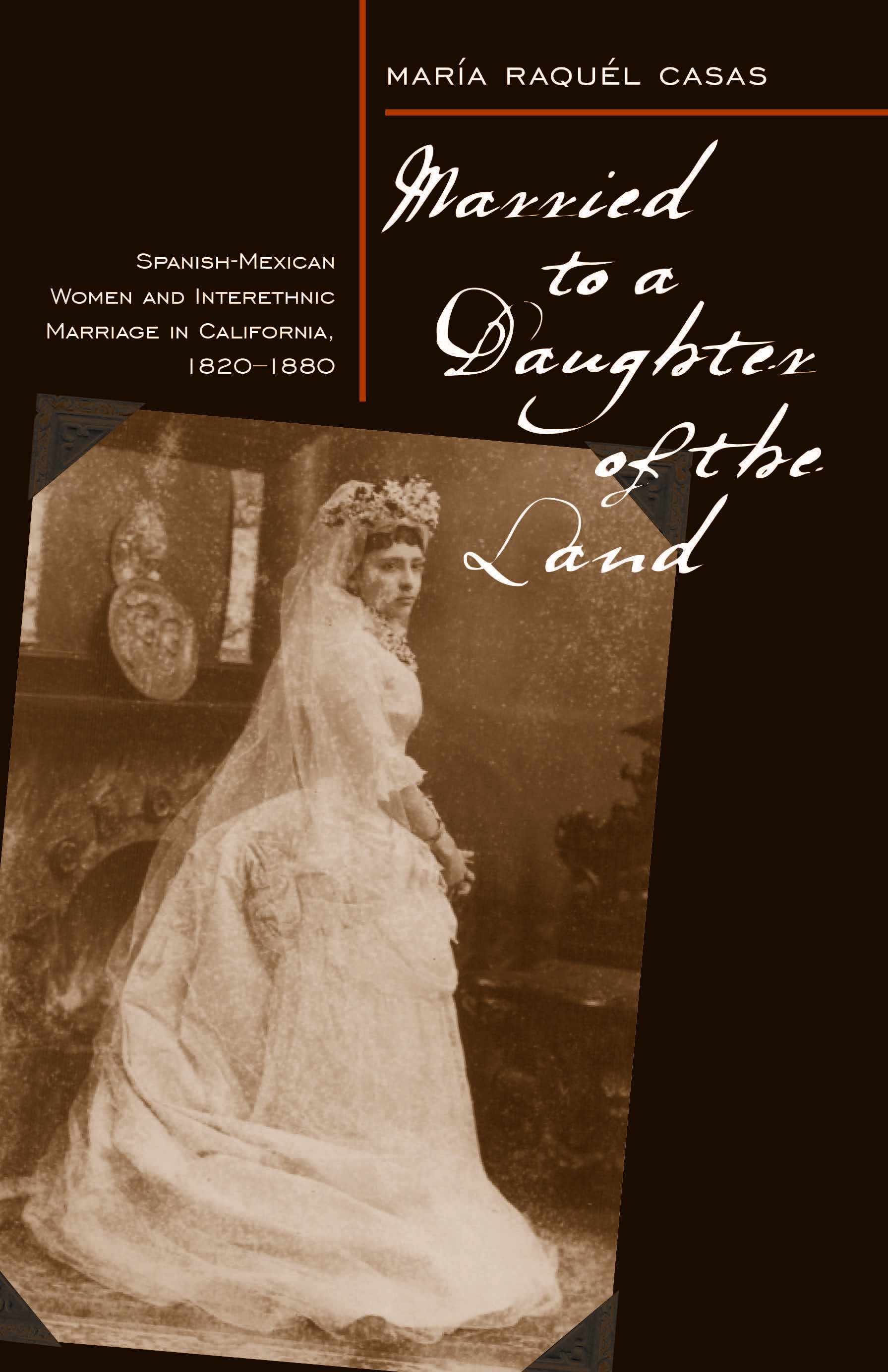Married to a Daughter of the Land: Spanish-Mexican Women and Interethnic Marriage in California, 1820-1880Posted in Books, History, Latino Studies, Media Archive, Monographs, United States, Women on 2010-01-11 01:27Z by Steven |
University of Nevada Press
2007
Hardcover ISBN: 978-0-87417-697-1
Hardcover Pages: 272
Paperback ISBN: 978-0-87417-778-7
Paperback Pages: 280
María Raquél Casas, Associate Professor of History
University of Nevada, Las Vegas
The surprising truth about intermarriage in 19th-Century California
Until recently, most studies of the colonial period of the American West have focused on the activities and agency of men. Now, historian María Raquél Casas examines the role of Spanish-Mexican women in the development of California. She finds that, far from being pawns in a male-dominated society, Californianas of all classes were often active and determined creators of their own destinies, finding ways to choose their mates, to leave unsatisfactory marriages, and to maintain themselves economically. Using a wide range of sources in English and Spanish, Casas unveils a picture of women’s lives in these critical decades of California’s history. She shows how many Spanish-Mexican women negotiated the precarious boundaries of gender and race to choose Euro-American husbands, and what this intermarriage meant to the individuals involved and to the larger multiracial society evolving from California’s rich Hispanic and Indian past. Casas’s discussion ranges from California’s burgeoning economy to the intimacies of private households and ethnically mixed families. Here we discover the actions of real women of all classes as they shaped their own identities. Married to a Daughter of the Land is a significant and fascinating contribution to the history of women in the American West and to our understanding of the complex role of gender, race, and class in the Borderlands of the Southwest.

.jpg)




